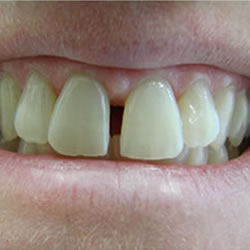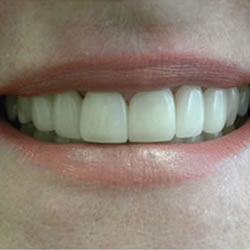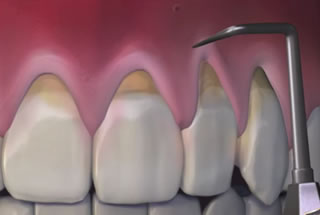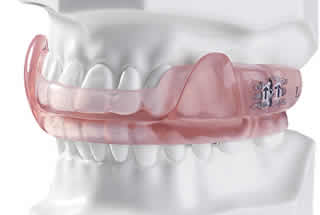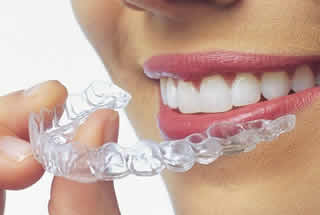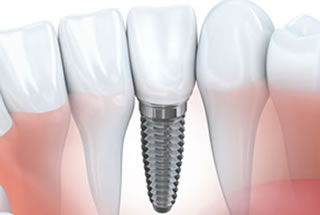Does your child complain of pain in a tooth when there is no apparent cause? Is there a tooth that is very sensitive to hot or cold liquids and foods? Is there a tooth in your child’s mouth that is broken, exposing the pulp? If your child is experiencing these symptoms, you should see an endodontist immediately, because your child may need root canal treatment.
Endodontic therapy is about the pulp of a tooth. The pulp contains the nerves of the tooth, along with the blood vessels that supply the tooth with nutrients and oxygen. When the pulp becomes infected or is injured, a root canal treatment can be done to try to save the tooth.
Root canal therapy can be performed on permanent (adult) or primary (baby) teeth. Even though your child will eventually lose his or her baby teeth, it is usually recommended that the tooth be treated unless the tooth is about to fall out naturally anyway. Primary teeth hold the space for the erupting permanent teeth, providing them a pathway for eruption. If a baby tooth comes out too soon, the surrounding teeth will begin to move into the empty space, blocking the adult tooth from growing in, or causing it to come in at an angle.
If the pulp of your child’s tooth is too damaged to save, a root canal treatment will be performed. The endodontist removes all of the pulp from inside the affected tooth, cleaning out the inside of the tooth completely, and filling and sealing it with a special material. This special material is absorbed by the body when the primary tooth begins to fall out naturally. A crown is placed on top of the tooth to protect and preserve it. Typically, these crowns are made of stainless steel; however, if the tooth is in the front of the mouth, a more natural-looking material can be used.
Don’t ignore your child’s symptoms. Tooth problems can be very painful, and will only worsen over time. See your dental professional immediately to begin addressing the cause. You won’t regret taking this important step toward maintaining your child’s oral health.

 Before you being the process of dental veneers with your dentist, you should know about some of the things that can go wrong. Having this information before you begin your therapy allows you to ask important questions and to make the best choice for you and your smile.
Before you being the process of dental veneers with your dentist, you should know about some of the things that can go wrong. Having this information before you begin your therapy allows you to ask important questions and to make the best choice for you and your smile.
Dental veneers are extremely thin wafers made from resin, porcelain or other materials that are adhered to the front side of your teeth that give the appearance of a beautiful, perfect smile to those who have imperfections to their natural smiles. Veneers can cover discolored, chipped, gapped or crooked teeth.
Some veneer types require that your natural tooth be ground down to provide a space for the dental veneers. This is a permanent change and cannot be undone. There is no current means to add enamel to your natural teeth. Because of this permanence, veneers should be researched before being pursued.
Potential problems with dental veneers include:
- Gaps between the veneer and the tooth that can lead to bacteria buildup, infection and decay
- The dentist accidentally grinding down too far and exposing a nerve, causing pain and potentially leading to a root canal
- Poorly constructed veneers that do not meet properly at the tooth margins – where the tooth meets the gum line – causing the gums to swell or bleed
- Veneers that fall off from poor application or from poor patient habits such as nail biting or chewing ice, pencils or pens
- Veneers that look puffy or are too long, affecting patient bite and leading to jaw pain
- Veneers that don’t look real because they are too large, too white, or lack appropriate surface texture
- Discoloration of the bonding agent or natural teeth due to poor hygiene habits
At our Toronto dental office, veneers can work miracles when it comes to making over a problematic smile. They can be enjoyed for an average of ten years before they might need to be replaced. If you are considering dental veneers, talk to your dentist today. Insist on seeing before and after photos done by that dentist to ensure that you are making the right choice for your smile goals.

 One of the most exciting parts about undergoing a smile makeover is imagining the results. You imagine flashing a smile that stops people in their tracks. You imagine seeing yourself in the mirror and looking years younger, and happier than you’ve been in some time. Fortunately, through advances in dental technologies, dentists can give you a preview of the changes you can expect to see in your new smile!
One of the most exciting parts about undergoing a smile makeover is imagining the results. You imagine flashing a smile that stops people in their tracks. You imagine seeing yourself in the mirror and looking years younger, and happier than you’ve been in some time. Fortunately, through advances in dental technologies, dentists can give you a preview of the changes you can expect to see in your new smile!
Before and after photos are excellent resources for you not only to choose the best dentist available, but to see examples of the results you may expect to see in your own smile makeover. A before and after photo book can enable you to get an excellent idea of what’s in store for your smile, as well as concrete proof that your dentist is skilled and completes quality work.
During a smile makeover, your dentist will take an impression of your teeth to form a plaster model of your existing teeth. That mold can be reshaped to show the changes that will come with your dental makeover.
The very latest technology incorporates digital scans of your teeth to create models of your smile. Imaging technology can give you a very realistic preview of the results of your smile makeover. They can also be used by your dentist to provide instructions to the dental lab.
One final way to preview your new smile is with dental composite bonding. Your dentist can bond composite resin materials temporarily to your teeth so that you may fully visually realize the intended results of the treatment before you begin. For example, you may be fitted with a temporary dental crown, bridge, or veneer. This allows you to make adjustments before committing to a permanent change to your natural teeth. Temporary composite resin mockups can be removed completely and have no lasting impact on your teeth once removed.
If you are looking for dentist in the Toronto area, schedule your appointment today with Dr. Cruz.
Are you looking to revamp your smile? Have your teeth become dull or discolored? With age, teeth naturally discolor. Consumption of darker liquids such as tea, dark sodas, coffee, or red wine can leave a visible stain on your tooth enamel, making your smile dingy and less attractive. Stains from smoking can reveal your smoking habit before someone has even spoken with you. Whitening and brightening your smile gives you a self-esteem boost that is visible to others. You will feel more confident and will smile, talk, and eat with comfort.
You may be trying to choose between dental veneers and teeth whitening to achieve your smile goals. Both are excellent paths toward a more attractive smile, but which should you choose? They can change your tooth color by several shades and both can look natural, but there are some specific conditions that would make one choice better for you and your smile.
Dental veneers – porcelain or composite – often require the preparation or shaping of the teeth being treated. Your dentist will remove a very thin layer of your natural tooth, allowing the veneer to sit on top of it without appearing bulky or unnatural. Because the part of the tooth that is removed will not grow back, it is a permanent change to your mouth. Many dentists will recommend that you whiten your teeth first, before pursuing veneers.
Are your teeth crooked or misaligned? Do you have missing teeth or gaps between your teeth, especially along the front? Are any of your teeth cracked? This makes veneers a preferred choice for you over whitening. Dental veneers can cover a number of cosmetic smile issues, and will leave a patient with an attractive, even smile. Your dentist will shape your existing teeth to allow for the perfect placement of the thin veneer, leaving you with a beautiful, natural-appearing smile.
Talk to your Toronto dentist today about your smile goals and see if dental veneers or tooth whitening is the best choice for you and for your teeth.

 Your family, general, or pediatric dentist or orthodontist may refer you to an oral and maxillofacial surgeon for some dental treatments that require oral surgery. An oral surgeon is a specialist who has graduated from an accredited dental school and also completed additional education and residency related to surgical procedures needed to treat various oral diseases and conditions. An oral surgeon is trained in treating the following conditions:
Your family, general, or pediatric dentist or orthodontist may refer you to an oral and maxillofacial surgeon for some dental treatments that require oral surgery. An oral surgeon is a specialist who has graduated from an accredited dental school and also completed additional education and residency related to surgical procedures needed to treat various oral diseases and conditions. An oral surgeon is trained in treating the following conditions:
- Removal of diseased or impacted teeth
- Placement of dental implants
- Treatment of facial trauma involving gums, jaws, nasal cavities, cheekbones, eye sockets, and forehead
- Evaluation of pathologic conditions such as cysts and tumors of the mouth and face or acute infections of the oral cavity, salivary glands, neck, and jaws
- Treatment of facial pain including those caused by temporomandibular (TMJ) problems
- Cosmetic or reconstructive surgery to correct jaw, facial bone, and facial soft tissue problems
- Corrective jaw surgery
- Cleft lip and cleft palate repair
- Surgical treatment for sleep apnea
There are many different techniques that oral surgeons use to accomplish your treatment goals. The choice of techniques may vary between surgeons and should be discussed between you and your surgeon prior to the procedure.
Many oral surgery procedures in our Toronto dental office can be completed in an outpatient setting. Often you are only in the office for a few hours and can return to your regular routine in a matter of days. A good oral surgeon will be able to perform these procedures with little chance of complications, and will be able to provide you with the information you need to understand the recovery process. Your oral surgeon will often collaborate with other specialists, such as an orthodontist or dentist, to achieve your ultimate treatment goals.

 Are you embarrassed or ashamed of your smile? Do you hold your head down or cover your mouth when someone pulls out a camera? While you may think achieving a smile makeover will be a long and tedious process, you might be surprised to learn there are many quick and painless procedures available to improve your smile instantly. Your dental professional has a variety of treatments designed to transform the look of your smile in as little as one visit.
Are you embarrassed or ashamed of your smile? Do you hold your head down or cover your mouth when someone pulls out a camera? While you may think achieving a smile makeover will be a long and tedious process, you might be surprised to learn there are many quick and painless procedures available to improve your smile instantly. Your dental professional has a variety of treatments designed to transform the look of your smile in as little as one visit.
Professional teeth whitening in our Toronto dental office can transform a dingy yellow smile to bright and beautiful in no time. The most effective types of in-office whitening systems utilize a buffer in the gel that protects the tooth enamel from damage and can literally brighten your teeth up to 10 shades in about an hour.
Porcelain veneers are an option for concealing chipped, stained, cracked, or broken teeth. With veneers, extremely thin shells are shaped and bonded to the natural face of your teeth. This procedure can be completed in as little as two visits and will have a profound impact on the aesthetics of your smile.
Tooth colored fillings and bonding are also procedures that will help conceal and correct gaps, cracks, damage caused by tooth decay, or irreversible stains. Little preparation is needed for these treatments, and they can be completed in one office visit.
There is no longer a need to be dissatisfied with your teeth or smile. Consult your dentist to get more information about instant smile makeover solutions, and hold your head high and smile with confidence the next time someone asks you to say “Cheese!”





 E-Mail Us
E-Mail Us  416-595-5490
416-595-5490